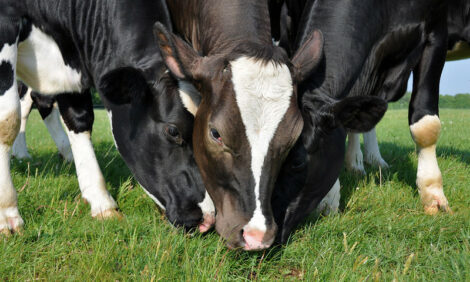



DFA Improves Environmental Impact
US - In recognition of Earth Day, Dairy Farmers of America, Inc. (DFA) is sharing the results of an internal assessment to understand its environmental impact. The comprehensive process has allowed DFA to determine its carbon footprint and evaluate activities throughout the Cooperative designed to manage that footprint in years to come.
The consumption of fuel and electricity in plants, fuel use by DFA vehicles and the impact of renewable energy programs for members was among the data collected to establish a benchmark from which the Cooperative can measure the results of current and future sustainability initiatives.
“Whether it is in our plants, on the road or on member farms, we are working to ensure that DFA and our members’ legacies last for generations,” said David Darr, vice president of sustainability and public affairs. “This includes efforts in the areas of energy usage, transportation and animal care and wellness.”
DFA’s 21 wholly owned plants have completed or are planning 150 projects with a sustainability focus, from instituting new wastewater treatment programs to upgrading lighting systems.
Examples of sustainable innovation at plants include:
- Water management at the Hughson, California plant. Among the results of these efforts has been an 11.2 percent reduction in well water usage and a 120,000-gallons-per-month savings from using re-circulated water.
- Facility upgrades and process improvements at the Springfield, Montana, plant that have decreased electricity usage, water usage and natural gas consumption. Projects include lighting upgrades, steam trap survey and repairs, installing a new boiler control system, reclaiming glass rinse water and reducing use of compressed air.
- Process improvements at the Fort Morgan, Colorado, plant, which have reduced energy usage and conserved water. Re-using the water removed from milk in the concentration process for cleaning, has reduced water use by two million gallons per year.
In addition, all five of DFA’s contract manufacturing plants have committed to the Energy Star Challenge, with a goal to reduce energy intensity by 10 percent or more within five years.
On the RoadIn 2010, average fuel efficiency among DFA’s transportation fleet increased 9.1 per cent from the year before. In addition, DFA has been phasing in larger-capacity milk trucks in areas where highway policies and infrastructure support it. In 2010, DFA’s use of higher-capacity trucks in Colorado reduced annual trips by milk trucks by 5,838. That is a reduction of 517,580 annual vehicle miles, saving 94,105 gallons of fuel and 2,098,541 pounds of carbon dioxide.
At the Farm More than 30 member farms conducted energy efficiency audits during 2010 in partnership with DFA’s Dairy Energy Services (DES). These dairy energy audits identified an average annual savings of 31,922 kilowatt per dairy, for an average cost savings of $3,494.
Also through DES, members can participate in wind power assessments that evaluate members’ wind resources and determine whether there is adequate wind and land to support turbine technology. More than 20 member farms conducted assessments in 2010, and several installations are underway.
Similarly, a solar assessment looks at a member’s sun resource, land and state incentives to determine whether a solar power project would be a financially sound investment. A dozen DFA members have already conducted solar assessments through the newest DES offering.
TheCattleSite News Desk


